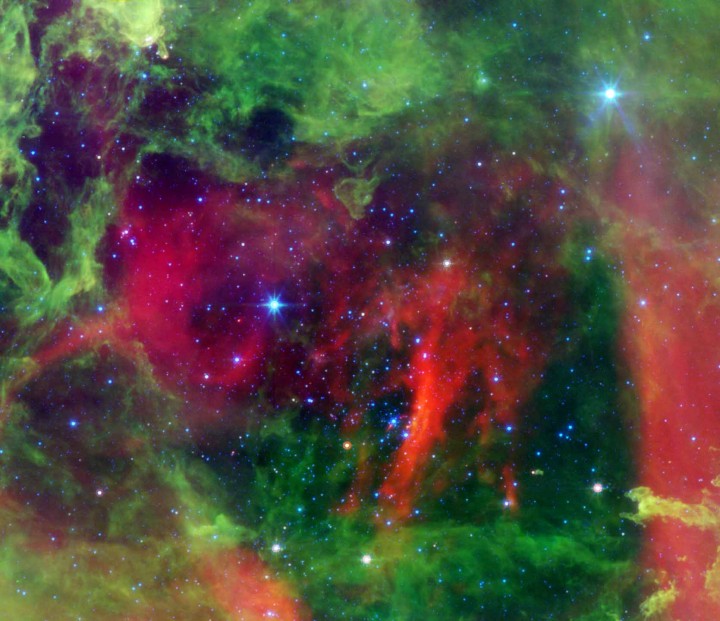
|
Explanation: Winds and radiation from massive hot stars in the Rosette Nebula have cleared the natal gas and dust from the center of the nearby star-forming region. They also pose a danger to planet forming disks around young, cooler stars in the neighborhood. This Spitzer Space Telescope infrared image of dust clouds near the Rosette's central region, shows the cleared-out cavity. The view spans about 45 light-years at the the nebula's estimated distance of 5,200 light-years. Putting your cursor over the false color picture will highlight the dangerous hot stars, classified as O stars with surface temperatures of 25,000 kelvins or higher. Astronomers calculate that cool stars wandering within about 1.6 light-years of the Rosette's O stars are in danger of having their planet forming disks destroyed.
|
January February March April May June July August September October November December |
| |||||||||||||||||||||||||||||||||||||||||||||||||||||||
NASA Web Site Statements, Warnings, and Disclaimers
NASA Official: Jay Norris. Specific rights apply.
A service of: LHEA at NASA / GSFC
& Michigan Tech. U.
Based on Astronomy Picture
Of the Day
Publications with keywords: star formation - NGC 2244 - Rosette Nebula
Publications with words: star formation - NGC 2244 - Rosette Nebula
See also:
- APOD: 2025 July 16 B The Rosette Nebula from DECam
- APOD: 2025 July 10 B Lynds Dark Nebula 1251
- APOD: 2025 June 23 B W5: Pillars of Star Formation
- APOD: 2025 June 17 B Rosette Nebula Deep Field
- APOD: 2025 April 28 B Gum 37 and the Southern Tadpoles
- APOD: 2025 March 26 B Star Formation in the Pacman Nebula
- A Cosmic Rose: NGC 2237 in Monoceros
